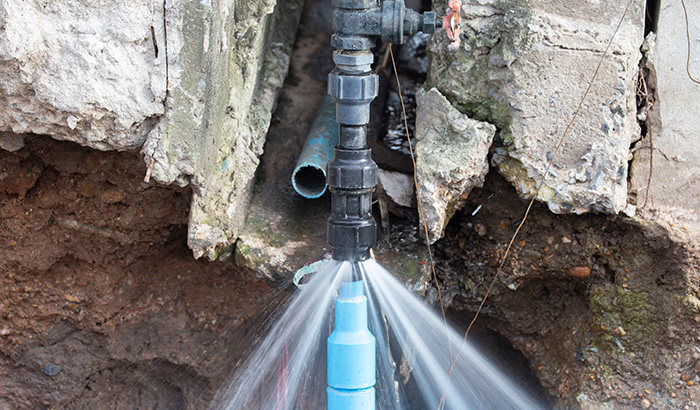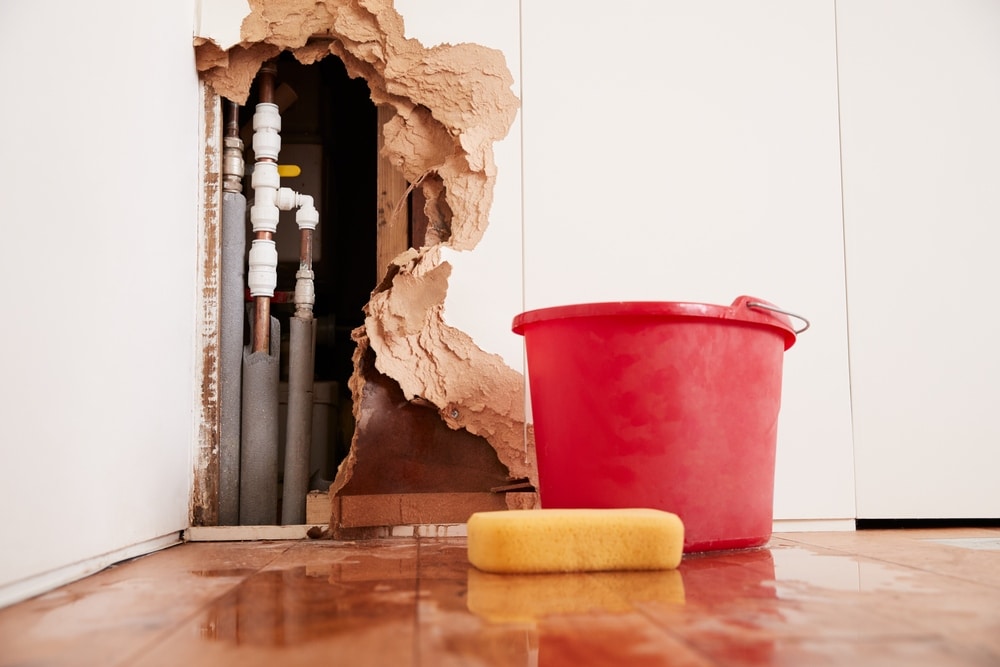What to Do When a Pipe Bursts: Immediate Steps for Property Owners
A pipe burst can be a home owner's worst nightmare, resulting in significant damage if not addressed without delay. The prompt response is vital: first, find the source of the leak and shut off the primary water shutoff to stop additional flooding. Following this, draining the pipes comes to be necessary to reduce extra problems.

Assess the Circumstance
Begin by determining the source of the leak; this may involve inspecting the area around the ruptured pipe for visible signs of water escape. If the ruptured took place in a hidden room, such as within a wall surface or under a flooring, look for water spots or pooling that might indicate the place.
Inspect for electrical cords that might be subjected to water, as this poses a substantial threat of electrocution. Furthermore, take note of any kind of beneficial things or furnishings that might be at risk of water damages.
Documenting the damages with photographs can additionally be advantageous, particularly for insurance claims. Time is important, as standing water can cause mold development and additional structural damage. By thoroughly assessing the situation, you will certainly be much better prepared to take the needed steps to alleviate additional issues arising from the ruptured pipeline.
Shut Off the Water
The instant priority after recognizing a ruptured pipe is to turn off the supply of water to avoid more flooding and damages. Locate the main shut-off shutoff, generally located near the water meter, in the cellar, or on an exterior wall. Transforming this shutoff clockwise will stop the circulation of water throughout your home, reducing the threat of extensive water damage.
If you are incapable to discover the main shut-off shutoff or if it is malfunctioning, you may require to turn off private shutoffs linked to the impacted pipeline, if accessible. Some homes likewise have second shutoffs for specific home appliances, such as cleaning machines or dish washers.
It's suggested to familiarize yourself with the area of these shutoffs prior to an emergency situation takes place, as this knowledge can save useful time throughout a crisis. In the event that the primary shutoff is stuck or challenging to transform, do not force it; rather, think about seeking specialist aid.
Once the supply of water is shut down, take a minute to examine the scenario even more while planning for the next steps, ensuring that your home is as safe as possible from additional water intrusion.
Drain Pipes the Pipelines
After turning off the water, it is essential to drain pipes the pipelines to minimize any type of remaining water that could lead to additional damage. Begin by opening up all faucets in the home, beginning with the greatest degree to the most affordable. This process encourages the water to drain entirely, permitting gravity to aid in getting rid of residual water from the pipes.

Be mindful when draining pipes hot water, as it can cause burns. Properly draining the pipes is important to stopping additional difficulties and aids secure your home from extra water damages throughout this stressful scenario.
Get In Touch With a Professional
In the wake of a ruptured pipeline, find out getting in touch with a professional plumber is important to ensure an extensive assessment and effective repair work. Attempting to handle the situation without experienced help can result in further damages and complications. A certified plumber has the proficiency and specialized devices essential to determine the source of the leakage and address it successfully.
When picking a plumber, focus on those with a strong reputation and relevant experience in emergency situation plumbing services. Inspecting on the internet testimonials, acquiring references, and validating credentials can aid you make an informed option. It is suggested to get look at this web-site in touch with multiple experts to contrast feedback times, estimated expenses, and service offerings.
As soon as you have actually engaged a plumbing technician, provide them with as much details as possible about the case, consisting of the place of the ruptured pipe and the steps you have already taken. This details will certainly assist them in diagnosing the issue promptly and precisely.
Document the Damage
When a plumber has actually been called and the instant worries attended to, it is crucial to record the damages triggered by the ruptured pipeline. Begin by taking clear photographs of the impacted areas, concentrating on visible damage to wall surfaces, flooring, and home furnishings.
Following, put together a breakdown of damaged things, including their approximate value and any type of appropriate acquisition information. This supply should incorporate long-term fixtures, individual possessions, and any architectural damages observed. When possible, consist of the estimated expense of fixings based upon professional evaluations or previous quotes for comparable job.
In addition to aesthetic and written paperwork, keep documents of any visit site interactions with your plumbing and insurance coverage provider. By taking these actions, you will certainly be better prepared to browse the after-effects of the event.

Final Thought
Immediate evaluation of the circumstance, followed by closing off the major water supply, is crucial. Draining pipes the pipes and documenting the damage guarantees correct handling of the case for insurance objectives.
The immediate top priority after determining a burst pipe is to shut off the water supply to stop further flooding and damages. Turning this shutoff clockwise will stop the flow of water throughout your home, alleviating the danger of considerable water damage.
After closing off the water supply, it is crucial to drain the pipelines to lessen any remaining water that could lead to added damages. For homes with a hot water heater, you should additionally drain pipes the tank by attaching a tube to the drain valve and guiding the water right into a suitable container or outside.
Appropriately draining the pipelines is vital to preventing more problems and aids safeguard your home from extra water damages during this demanding circumstance.